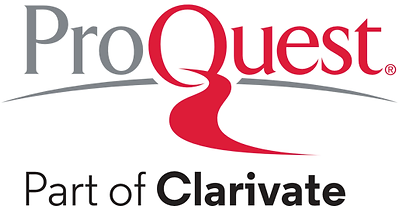Automated Classification of Carbon Nanomaterial Structures based on Computer Vision Model
| Authors | Anurag Shrivastava1 , Sheela Hundekari2, Deepak Bhanot3, B Rajalakshmi3, Navdeep Singh5, Ramy Riad Al-Fatlawy6, Kiran Manem7, Kanchan Yadav8 |
| Affiliations |
1Saveetha School of Engineering, Saveetha Institute of Medical and Technical Sciences, Chennai, Tamilnadu, India 2School of Computer Applications, Pimpri Chinchwad University, Pune, India 3Centre of Research Impact and Outcome, Chitkara University, Rajpura- 140417, Punjab, India 4Department of Computer Science, New Horizon College of Engineering, Bangalore, India 5Lovely Professional University, Phagwara, India 6Department of Computers Techniques Engineering, College of Technical Engineering, The Islamic University, Najaf, Iraq 7Department of ECE, GRIET, Hyderabad, Telangana, 50090, India 8Department of Electrical Engineering, GLA University, Mathura, India |
| Е-mail | anuragshri76@gmail.com |
| Issue | Volume 17, Year 2025, Number 3 |
| Dates | Received 07 April 2025; revised manuscript received 18 June 2025; published online 27 June 2025 |
| Citation | Anurag Shrivastava, Sheela Hundekari, et al., J. Nano- Electron. Phys. 17 No 3, 03026 (2025) |
| DOI | https://doi.org/10.21272/jnep.17(3).03026 |
| PACS Number(s) | 07.05.Mh, 81.05.ue |
| Keywords | Carbon nanomaterials, Microscopy image analysis, Modified water wave optimization, Convolutional autoencoder (CAE), Swin transformer. |
| Annotation |
Carbon nanomaterial structures hold significant promise across various industries, necessitating accurate and automated classification methods. Conventional approaches rely on handcrafted feature extraction techniques, often failing to capture complex spatial patterns inherent in nanostructures. Traditional Machine Learning (ML) and basic Deep Learning (DL) models suffer from low generalization and require manual feature engineering, making them inefficient for handling diverse and noisy microscopy images of nanostructures. The objective is to achieve a highly accurate and automated classification of carbon nanomaterial structures through an advanced framework. A novel approach Modified Water Wave-inspired Convolutional Autoencoder with Swin Transformer (MWW-CAE-ST), integrates optimization, and classification techniques to address existing challenges. A collection of microscopy images of carbon nanomaterials, including diamond particles, and nanotubes was used to evaluate the framework. Techniques, such as median filtering and histogram equalization (HE) were applied to enhance image quality by reducing noise and normalizing intensity levels. Local Binary Patterns (LBP) were employed to extract texture-based features that capture fine-grained details of the nanomaterial structures. Features generated by LBP were processed through the CAE for dimensionality reduction and refined by the Swin Transformer, which utilizes hierarchical self-attention to classify structures effectively. |
|
List of References |
Other articles from this number
1) Electrical and Photoelectrical Properties of ZnFe2O4/InSe Heterojunctions [03001-1-03001-4]2) Design, Fabrication and Measurements of a Single-Layer X-Band Miniaturized Patch Antenna with Metasurface for 0.5U and 1U CubeSat Missions [03002-1-03002-10]
3) Microstructure and Morphological Properties of Granulated Mg3Sb2 Thermoelectric Material [03003-1-03003-7]
4) Green Synthesis of ZnO Nanoparticles Using Leaf Extracts, their Characterization and Antimicrobial Applications [03004-1-03004-10]
5) Design and Performance Improvement of a 3.5 GHz Elliptical Patch Antennafor 5G Sub-6 GHz/WiMAX Applications [03005-1-03005-6]
6) Ellipsometric and Maxwell-Garnett Model Studies of Silicon Nitride-based Bilayer Structures Elaborated by LPCVD [03006-1-03006-5]
7) Design, Fabrication and Measurements of an X-Band Cross-Patch Antenna with Metasurface for Advanced LEO CubeSat Missions [03007-1-03007-12]
8) Nanotechnology Driven Advanced Imaging and Classification of Brain Tumours [03008-1-03008-5]
9) Compact Semicircle CSRR- Loaded Antenna for Triband Applications [03009-1-03009-5]
10) Analysis of Performance Parameter of Hexagonal Coil Structure for Wireless Power Charging in Electric Vehicle [03010-1-03010-5]
11) Design and Analysis of a Notched Super Wide Band Antenna for Wireless Communication [03011-1-03011-5]
12) Reduction of Common-Mode Voltage Using Novel T-Type Multilevel Inverter for EV Application [03012-1-03012-5]
13) A Meta Surface Based Patch Antenna for Wireless Space Craft 5G Communication Systems [03013-1-03013-5]
14) Graphene Nanoribbon Based Asymmetric Tunnel FET for Fast Switching and Low Power Applications [03014-1-03014-5]
15) Massive MIMO Signal Detection Using Cascaded OQRD-PMD Method [03015-1-03015-6]
16) Design of a Compact Vivaldi Antenna for Wearable Tactical Applications [03016-1-03016-4]
17) Low-Profile Tapered Slot Antenna for Wearable Military Applications [03017-1-03017-4]
18) Optimized Dual Coupling PIFA for Low SAR Smartphone and Wearable Applications [03018-1-03018-4]
19) Design of Efficient Miniaturized Printed Monopole Antenna for Short-Range Wireless Applications [03019-1-03019-5]
20) Quantum Computing Approaches to Autonomous Mobile Robots and Multi-Machine Systems: A Perspective on Design Automation [03020-1-03020-6]
21) A Circular CPW Fed Patch Antenna with an L-Shape and Two Semi-Circular Shaped Slots for L, Ku and K-Bands [03021-1-03021-4]
22) DFT Performance Analysis of Graphene Nanoribbon FET with Gate Stack for Low Power Applications [03022-1-03022-5]
23) Forecasting Dielectric Behavior of Nano-Epoxy Materials through AI-based Electronic Properties [03023-1-03023-5]
24) Novel Model for Classifying the Toxicity of Metal Oxide Nanoparticles [03024-1-03024-6]
25) Dynamics and Optimization of Physical Processes in Information Systems Using Autonomous Mobile Robots and Multi-Agent Systems [03025-1-03025-6]
26) Dynamic Optimization of Non-Equilibrium Processes in Nanostructures for High-Performance Applications [03027-1-03027-5]
27) Radiation-Induced Processes in Commercially Available Samples of Activated Carbon Under the Influence of Gamma- and Beta-Radioactivity [03028-1-03028-8]
28) Enhancing Concentrated Solar Photovoltaic (CSPV) Efficiency through Co-Doped ZnO Window Layers and Bi-As Infused GaSb Substrates [03029-1-03029-9]
29) Theoretical and Experimental Study of a Human Inner Ear Implant with an Ultrasonic Communication Line [03030-1-03030-7]
30) Thermoresistive Properties of Graphite Films [03031-1-03031-4]
31) Percolation Behavior of Electrical Conductivity of Polylactic Acid-Based Nanocomposites [03032-1-03032-6]
32) Structural and Optical Properties of Polystyrene CdS Nanocomposite Prepared by a Soft Chemistry Method [03033-1-03033-5]
33) Influence of Pulsed Current Parameters on the Structure Formation of Amorphous Co-W Alloys and their Thermal Stability [03034-1-03034-5]
34) First-Principles Calculation Investigations of Bandgap Bowing Parameters, Electronic and Optical Properties of Cd1 – xZnxTe, Cd1 – xZnxSe and Cd1 – xZnxS Semiconductors Alloys [03035-1-03035-7]
35) Reconfigurable Truncated E-Shape Electromagnetic Gap-Coupled Antenna with Air Gap and Switch Configurations for Wideband Wireless Applications [03036-1-03036-6]
36) Recovering Data for Free Induction Decay Signal for MRI Reconstruction with Interpolation [03037-1-03037-6]
37) Novel Hybrid Approaches for Occupancy Prediction Using Temperature, Light and CO2 Level Supporting Electrical Energy Management [03038-1-03038-6]






